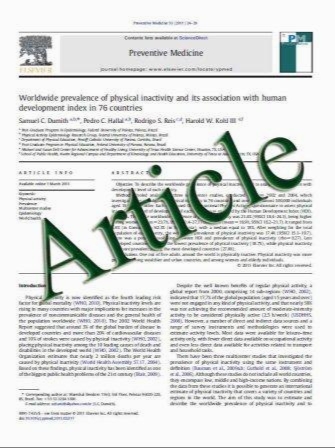Parental reports of adverse events following simultaneously given dT-IPV and MMR vaccines in healthy 9-year-old children
- نوع فایل : کتاب
- زبان : انگلیسی
- مؤلف : Jeanet M. Kemmeren & Nicoline A. T. van der Maas & Hester E. de Melker
- چاپ و سال / کشور: 2011
Description
In the Netherlands, children at 9 years of age receive a booster dT-IPV together with their second measles, mumps, and rubella (MMR) vaccination within the national immunization program. Safety is monitored continuously by enhanced passive surveillance. This population-based study was conducted to obtain more information on adverse events after vaccination at 9 years of age. Questionnaires on local and systemic reactions were distributed 1 and 3 weeks after vaccination, respectively, to parents of 1,250 healthy children who received their MMR and diphtheria, tetanus, and inactivated poliovirus injection (dT-IPV) vaccination as scheduled. Response to the questionnaires was 57.0% and 46.5%, respectively. Local reactions occurred in 86.5% of the children within 7 days after vaccination, more often at the dT-IPV (83.4%) than at the MMR site (32.7%). Pain was the most reported symptom (80.8% at the dT-IPV site; 29.1% at the MMR site). Systemic events occurred in 33.4% children within 7 days after vaccination, with headache as the most frequently reported (20.8%). Systemic events occurred in 20.8% children 8–21 days after vaccination. Children with local reactions at only the dT-IPV site had significantly more systemic events (19.3%) than those without local reactions (3.4%, p<0.01). Such difference was not found for the MMR site. No serious adverse events were reported. Medical intervention was applied to 133 children (130 used analgesics and for three children the GP was consulted by phone). In conclusion, the frequency of reported local reactions is high, especially at the dT-IPV site, but all symptoms were transient. However, the use of reduced antigen content vaccines in association with the occurrence of adverse events is meaningful to explore. Furthermore, the overall rates are useful for monitoring variations in adverse events rates in the general population
Eur J Pediatr (2011) 170:339–345 DOI 10.1007/s00431-010-1294-4 Received: 28 June 2010 / Accepted: 6 September 2010 / Published online: 21 September 2010


